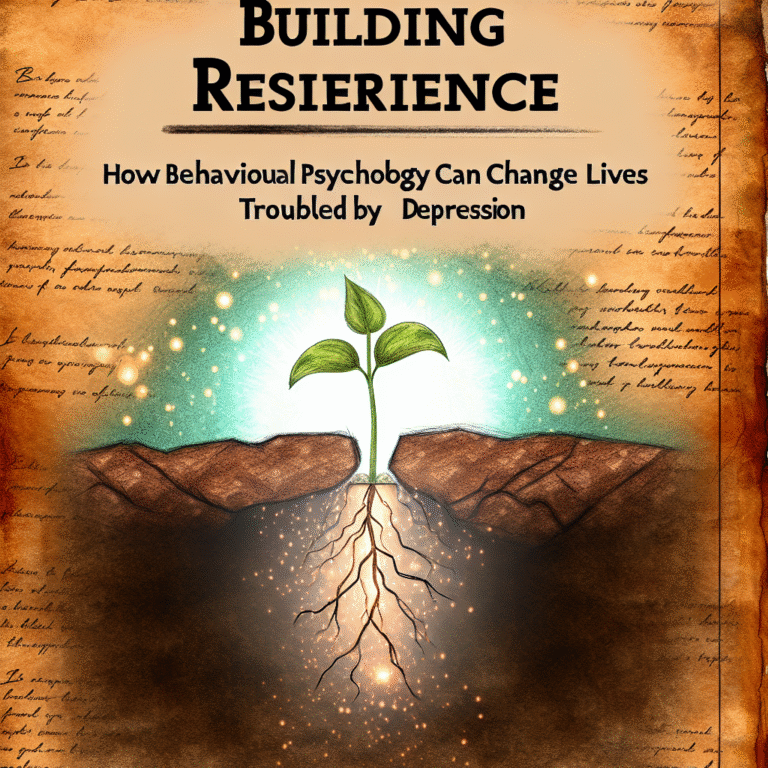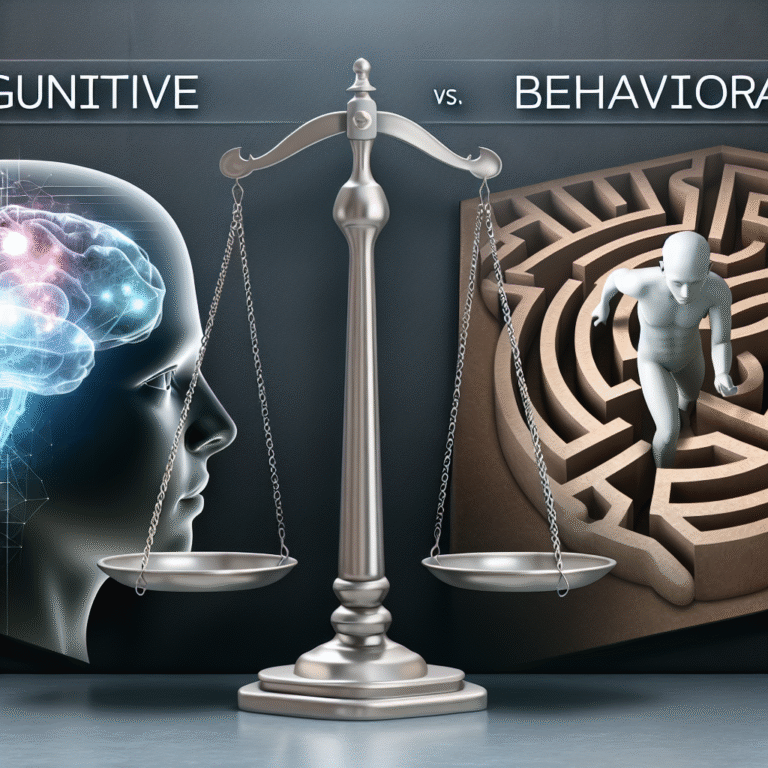
The Habitual Mind: Understanding the Psychological Mechanisms Behind Our Daily Routines
Introduction
In a world where chaos seems to reign, our habits carve out a sanctuary of predictability. The pillars of our daily lives, from our morning coffee ritual to our evening wind-down, are not simply routines; they are the foundation of our mental and emotional well-being. The Habitual Mind: Understanding the Psychological Mechanisms Behind Our Daily Routines is a journey through the intricacies of how our brains create patterns that guide our daily lives, often without conscious thought.
In this exploration, we will uncover the underlying psychological processes that govern our habits and routines. We’ll present real-world case studies that illuminate these concepts in action and provide actionable insights to harness the power of your habitual mind. Whether you seek to ingratiate positive behaviors into your everyday life or eliminate detrimental ones, understanding the habitual mind is essential. Join us on this enlightening adventure.
The Science of Habits: How They Form
The Habit Loop
The foundation of understanding the habitual mind lies in dissecting the habit loop—cue, routine, and reward. According to Charles Duhigg’s seminal work, The Power of Habit, these three components interplay to create the habits we all know:
- Cue: This is the trigger that initiates the habit.
- Routine: This is the behavior or action taken in response.
- Reward: This is the positive reinforcement that follows and reinforces the behavior.
For example, consider a common morning routine: the cue might be waking up, the routine could be brewing coffee, and the reward is the pleasurable sensation of enjoying that first sip. This loop conditions our brains to engage in such behaviors automatically over time.
| Habit Component | Example | Description |
|---|---|---|
| Cue | Morning alarm | Triggers the wake-up and subsequent actions. |
| Routine | Making coffee | Behaviors following the cue. |
| Reward | First sip of coffee | Positive reinforcement that encourages repetition. |
The Role of the Basal Ganglia
At the heart of our habitual mind is the basal ganglia, a group of nuclei in the brain linked to the control of voluntary motor movements and procedural learning. Research suggests that as habits form, the brain shifts from the prefrontal cortex—where conscious decision-making occurs—to the basal ganglia. This transition allows habits to stick, making them automatic and reducing cognitive load.
Neuroplasticity: The Brain’s Adaptability
Understanding the habitual mind also requires a glance at neuroplasticity—the brain’s ability to reorganize itself by forming new neural connections. This principle indicates that habits can be formed or altered throughout life, providing the opportunity to replace negative habits with positive ones.
Case Study: The 21-Day Habit Formation Theory
In 1960, Dr. Maxwell Maltz proposed that it takes approximately 21 days to form a new habit. While this concept has been simplified over time, it’s often cited as a motivational tool for individuals looking to make changes in their lives. Let’s analyze a real-world application where this theory was tested.
Analysis: The 21-Day Challenge
A group of volunteers participated in a 21-day personal development challenge where they had to incorporate one new habit into their daily routines—such as exercising, meditating, or journaling. At the end of the challenge, 72% reported a marked increase in consistency with their new habit. However, many also noted that triggers and rewards were crucial in making these changes stick.
This case reinforces that while 21 days can initiate habit formation, the quality of cues and rewards is vital for durability.
The Impact of Environment and Context
Environmental Cues
Our environment plays a significant role in shaping habits. Studies indicate that physical and social contexts can act as powerful cues for our habitual behaviors. For example, you may find that you tend to snack more frequently in a kitchen filled with sugary treats versus when it’s stocked with fruits and vegetables.
This observation emphasizes the importance of curating our environments to support our desired habits.
The Power of Social Influence
Moreover, the people we surround ourselves with have a profound influence on our routines. Social cues can either encourage or discourage habits. If you spend time with individuals who value fitness, it’s likely that you’ll adopt similar routines—signaling the social nature of habit formation.
Case Study: The Influence of Positive Social Circles
A recent study involving two groups of participants highlighted the impact of social circles on habit formation. One group surrounded themselves with health-focused friends, while the other did not. Those in the first group were significantly more likely to adopt healthy eating habits and exercise consistently over three months.
Analysis: Building a Supportive Network
This case reinforces that fostering a positive environment and surrounding ourselves with supportive individuals can bolster our efforts to develop beneficial habits. Leveraging social influence can be a strategic approach to motivating changes in behavior.
The Dark Side of Habits: Breaking the Cycle of Bad Routines
Understanding Bad Habits
While habits are often seen as beneficial, unhealthy behaviors can also take root in our lives. Bad habits like excessive screen time, procrastination, or unhealthy eating can hijack our routines. Recognizing the cues that trigger these behaviors is crucial to understanding how to dismantle them.
The "Habit Reversal Training" Technique
One effective method for breaking bad habits is called habit reversal training. This strategy involves replacing a undesired behavior with a more positive one. For instance, if you find yourself mindlessly snacking while watching TV, you can replace that behavior with a more constructive one—like taking a walk during show breaks.
| Bad Habit | Trigger | Replacement Habit |
|---|---|---|
| Overeating | Boredom while watching TV | Going for a quick walk |
| Procrastination | Feeling overwhelmed by tasks | Breaking tasks into smaller chunks. |
| Nail-biting | Stress or anxiety | Fidget toys or stress balls |
Case Study: Overcoming Procrastination
A team of researchers studied college students struggling with procrastination. They introduced trigger-based interventions, helping participants focus on cues that led to procrastination. After six weeks, about 65% of participants reported reduced procrastination and improved academic performance.
Analysis: The Practical Application of Habit Reversal
This highlights a significant method for overcoming negative habits: become aware of your triggers and actively replace undesired behaviors with constructive alternatives.
The Role of Mindfulness in Habit Formation
Practicing Mindfulness
Mindfulness—a state of active, open attention to the present—can be an effective tool for reshaping habits. By practicing mindfulness, individuals can gain better insight into their habitual actions and the cues that trigger them. This awareness can create a reflective space that makes it easier to initiate change.
Combining Mindfulness and the Habit Loop
Combining mindfulness with the habit loop can lead to more profound changes. By consciously engaging with the cue, routine, and reward, individuals can reprogram their habitual responses to more desirable outcomes.
Case Study: Mindfulness Meditation for Habit Change
A longitudinal study followed participants who practiced mindfulness meditation for eight weeks. Those involved reported significantly higher levels of self-efficacy and the ability to change negative habits. Participants described more conscious decision-making and a greater feeling of control over their actions.
Analysis: Cultivating Awareness
This case study showcases the incredible potential of mindfulness as a catalyst for change. Mindfulness not only promotes awareness of existing habits but also empowers individuals to make conscious choices that align with their long-term goals.
Conclusion: Sculpting Your Routine with Intent
Understanding The Habitual Mind: Understanding the Psychological Mechanisms Behind Our Daily Routines is more than a theoretical exercise; it’s a powerful tool for personal transformation. By recognizing the elements of habit formation, you can take deliberate actions to cultivate routines that resonate with your goals and values.
Whether it’s through environmental influence, social support, or mindfulness practices, the psychological mechanisms behind our daily routines are adaptable and empower us to craft a life of intention. Start small: identify one habit you’d like to change or incorporate, apply the principles outlined here, and watch as your habitual mind transforms the way you live.
FAQs
1. How long does it take to form a new habit?
While the common belief is 21 days, actual research suggests it can take anywhere from 18 to 254 days, depending on the complexity of the habit and individual differences.
2. Can I break a bad habit?
Yes! By identifying the cues and rewards associated with the habit and replacing them with healthier routines, breaking bad habits is achievable.
3. How can I make new habits stick?
Creating an environment that supports your goals, using social reinforcement, and practicing mindfulness are effective strategies for making habits stick.
4. Is it possible to change multiple habits at once?
While possible, it’s generally recommended to focus on one habit at a time to increase your chances of success and prevent feeling overwhelmed.
5. What role does motivation play in habit formation?
Motivation is essential; however, it can wane. Establishing a structured routine reduces the reliance on motivation by making behaviors automatic.
In crafting your daily life and routines, the understanding of your habitual mind can unleash potential you may not have realized existed. Embrace this journey, and witness the transformation of your life through the power of habits.
















